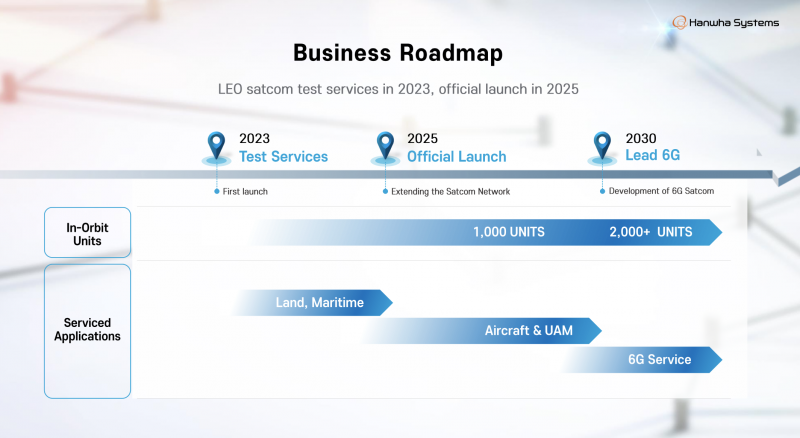Latest News

3D render of planet Earth viewed from space. Photo: NASA
Hanwha Systems, a South Korean defense company, plans to build a 2,000-satellite constellation in Low-Earth Orbit (LEO) to serve mobility applications.
In a May 30 press conference first reported by Space News, the company detailed plans to invest $420 million dollars into the system and starting pilot services in 2023. The system is expected to be in service in 2025 with 1,000 satellites, and to offer 6G satcom services by 2030 with 2,000 units in orbit.
According to the business roadmap, the company plans for the system to serve land and maritime applications first, then aircraft and Urban Air Mobility (UAM) applications in 2025, and 6G service in 2030.
This plan is part of a capital increase of 1.2 trillion South Korean won ($1 billion) through issuing new shares.
Hanwha Systems acquired the business assets of aviation satellite antenna company Phasor in 2020, after the company filed for bankruptcy in the United Kingdom. The company is now a subsidiary of the larger company called Hanwha Phasor. In addition, Hanwha Systems is a recent investor into mobility antenna company Kymeta Corporation.
In the presentation, Senior VP Jay Choi said that Hanwha Phasor’s satellite antenna technology will allow the company to lead Communications-on-the-Move (COTM) and LEO satellite-based communication services for air platforms.
“Hanwha Systems’ goal is to provide the best quality LEO communications services by taking advantage of its more than 20 years of military satellite communication business experience and the competitive air platform satellite antenna technology, which will be the integral part of Communications On-The-Move,” Choi said.

Hanwha Systems LEO business plan. Screenshot via Hanwha Systems.
He described the benefits of Hanwha Phasor’s technology as a thin electronically steerable antenna with signal processing done by semiconductors developed in-house that will accelerate response time. Hanwha Phasor’s products will be developed as modular structures of about A4 size that can be configured in three dimensions to airplanes or naval vessels.
Hanwha Systems will focus on inter-satellite link technology for the system, and Hanwha Phasor will focus on the antenna terminals.
Overall, the company plans to invest 120 billion won (~$100 million) to acquire technology assets related to satellite communication services; 80 billion won (~71 million) into satellite communication tech development; 190 billion won (~$170 million) into communications technology development and launches; and 110 billion won (~$98 million) to establish production facilities for satellite communications.
Choi also said the company will need to acquire LEO satellite control and operations technologies, and is already discussing cooperation frameworks with “leading companies abroad.”
Hanwha System is also investing in Urban Air Mobility (UAM), or flying vehicles that will provide transportation in urban areas in the future. THe company sees synergies between its UAM investment and LEO investment.
“Our communications space will be expanded by enhanced satellite connectivity, which means that, for example, we can enjoy a steady stream of digital contents onboard airplanes including UAM, or we can control autonomous flight airframes like drones by using the satellite connectivity,” Choi said.
Stay connected and get ahead with the leading source of industry intel!
Subscribe Now